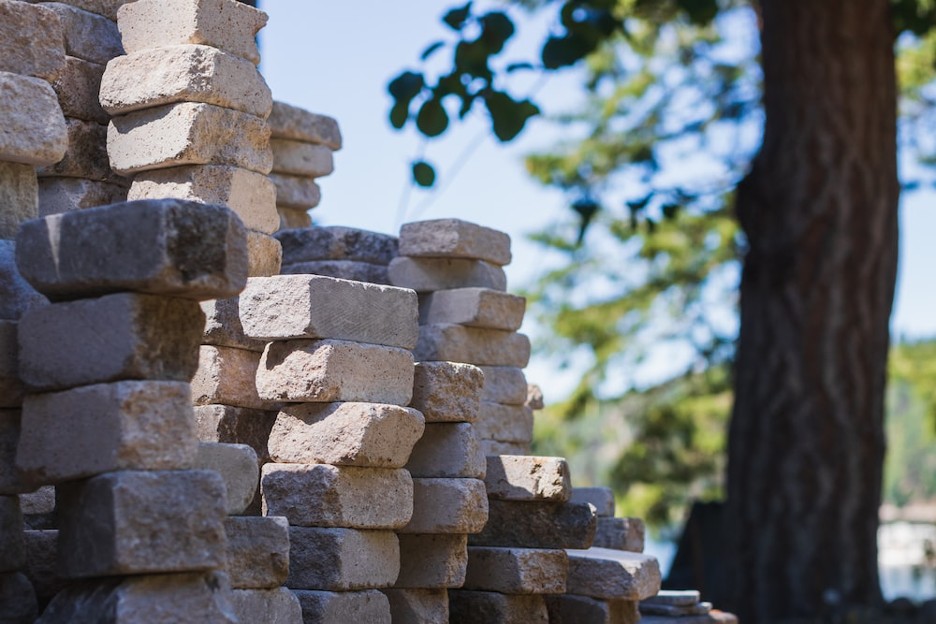Masonry is one of the oldest and most enduring construction techniques known to humanity. This ancient craft has shaped our world in more ways than we can imagine. From the grandeur of the pyramids in Egypt to the intricately designed cathedrals of Europe, masonry has played a pivotal role in the development of civilizations.
In this blog post, we will delve into the timeless art of masonry services, tracing its history from its humble beginnings to its modern-day applications.
The Dawn of Masonry: Ancient Origins
The history of masonry dates back thousands of years, with evidence of its practice found in various ancient civilizations. Some of the earliest examples of masonry can be traced to ancient Egypt, where massive stone structures like the pyramids were constructed using precise masonry techniques. The precision and durability of these structures continue to amaze and inspire engineers and architects today.
Masonry also played a crucial role in the construction of ancient Mesopotamian ziggurats, such as the famous ziggurat of Ur. These towering structures served as religious temples and administrative centers, demonstrating the importance of masonry in both sacred and secular contexts.
Roman Mastery of Masonry
The Romans took masonry to new heights during their extensive empire-building endeavors. They incorporated various architectural elements, such as arches, vaults, and domes, into their construction techniques. These innovations allowed for the creation of awe-inspiring structures, including the Colosseum, the Roman aqueducts, and the Pantheon.
One of the most remarkable aspects of Roman masonry was their use of concrete, a material that revolutionized construction and played a crucial role in the durability of their buildings. The concrete mixture, known as pozzolana, combined volcanic ash with lime and aggregate materials to create a durable and versatile building material. This innovation allowed the Romans to construct large, complex structures that have endured for centuries.
Medieval Masonry: The Age of Cathedrals
The medieval period witnessed the rise of Gothic architecture, which placed masonry at the forefront of monumental building projects. Cathedrals, such as the Notre Dame in Paris and Chartres Cathedral, exemplify this era’s intricate and awe-inspiring masonry craftsmanship. Flying buttresses, ribbed vaults, and pointed arches became hallmarks of Gothic architecture, all made possible through the expertise of medieval masons.
These cathedrals not only served as places of worship but also as testaments to the spiritual and artistic achievements of their time. The precision and beauty of their masonry work continue to captivate visitors and inspire admiration for the dedication and skill of medieval masons.
The Renaissance and Beyond
The Renaissance brought about a revival of classical architecture and the reintroduction of ancient Greek and Roman design principles. Masonry once again played a pivotal role in the construction of magnificent buildings, including palaces, churches, and bridges. The use of ornate stone carvings and sculptures became common in Renaissance masonry, adding a level of detail and artistry that had not been seen since the ancient Greece and Rome.
One of the most renowned figures in Renaissance masonry is Filippo Brunelleschi, the genius behind the construction of the Florence Cathedral’s famous dome. His innovative approach to engineering and masonry allowed for the creation of one of the largest and most iconic domes in the world. Brunelleschi’s work continues to be studied and admired by architects and engineers today.
Masonry in the Modern World
While modern construction techniques have evolved with the introduction of steel, concrete, and other materials, masonry remains a significant part of contemporary architecture. The enduring appeal of brick, stone, and concrete is evident in the many modern buildings that incorporate these materials into their design.
In the 20th and 21st centuries, architects and builders have continued pushing masonry boundaries, experimenting with new forms and technologies. Reinforced masonry, for example, combines traditional masonry techniques with steel reinforcement, allowing for greater structural integrity and design flexibility. This innovation has been particularly valuable in earthquake-prone regions.
The Craftsmanship of Masonry
One of the enduring qualities of masonry is the craftsmanship it demands. Masons are skilled artisans who take pride in their work, often passing down their knowledge through apprenticeship programs. The art of masonry involves much more than simply stacking stones or bricks; it requires a deep understanding of materials, geometry, and engineering principles.
Preserving Masonry Heritage
As the world continues to evolve and modernize, it is essential to preserve our masonry heritage. Historic buildings and structures, whether they are ancient temples, medieval cathedrals, or Renaissance palaces, are not just architectural marvels; they are a window into our past and a testament to human ingenuity and craftsmanship.
Preservation efforts often involve restoring and maintaining masonry structures to ensure their longevity. Skilled conservationists work diligently to repair and protect these historic treasures, using traditional techniques and materials to maintain the authenticity of the original construction.
Now that you know all about the evolution of masonry and how it’s grown in the past few decades, let’s get a hand on how you want to incorporate it into your own property. Make sure you trust the masonry repair services CT at Creative Masonry and Chimney. They have experts who specialize in creating top-quality masonry services Hartford, CT, Farmington, and nearby areas in Connecticut.
Contact them today to bring the warmth of masonry into your modern home.




